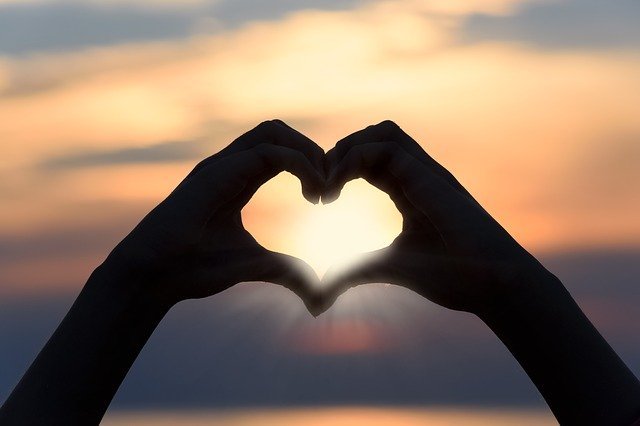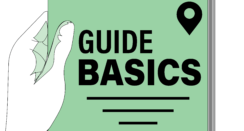The main form of communication is speech. We could also say that it is the most immediate, since through it we can obtain a quick response, it is not the only one that is within our reach.

We can also transmit our thoughts and feelings through the written message, secret keys, Morse code, smoke signals, sign language, etc. Actually, the possibilities of communication are as many as our capacities allow us.
However, there are gestures, movements and behaviors that accompany oral language. This is known as body language. In general, it is used to add different types of emotions to the message, such as happiness, sadness, fear, annoyance, shame, frustration, among many others.
Some people tend to be more expressive than others. This means that we can interpret what it wants to tell us much faster. However, others barely make gestures or other gestures when speaking. In this case, it may be much more difficult to determine what the intent behind the words is.
However, there are different techniques that allow this interpretation to be achieved. Would you like to understand people’s body language? It may seem insignificant to you. But the truth is that it gives you the opportunity to be aware of what people are silent. Of course, this is not meant to pry into anyone’s personal life. Rather, the intention is to be able to understand what the person’s real feelings are in order to show empathy.
On the other hand, you will also be able to determine what their true intentions are and if there is malice behind a façade of kindness. This way you can protect yourself from those who have the job of taking advantage of the good qualities of others. Therefore, let’s see right now what you should do to get a good understanding of body language.
Instructions to understand body language
Non-verbal communication constitutes 60% of the message we transmit. Having the ability to notice and interpret the signs that our interlocutor sends us is a very useful skill. In addition, it contributes to success in both personal and professional relationships.
If you pay a little extra attention, you’ll be able to learn to accurately read people’s body language. With practice, it will become a kneejerk reaction, just like blinking. But, let’s see what the signs we make with the different parts of our body mean.
The gestures of the face
The face is the magnifying glass of our emotions. In it you can detect many unconscious attempts to block what we say, hear or see. Usually when someone puts their hands to their face it is the result of some negative thought, such as insecurity or mistrust. For example:
- Covering or touching your mouth: If this gesture is made when speaking, it may be a sign that the person is trying to hide something. But if he does it when he listens, then you might think something is being hidden from him.
- Touching the ear: this sign is an unconscious impulse of the desire to block out what is being heard. That is, it may be that he wants you to stop talking.
- When the nose is touched: this can be an indication that the person is lying. When you lie, substances are released that inflame the inner tissue of the nose, which can cause itching. This also happens when the person gets angry or dislikes something.
- Rubbing an eye: This gesture may be an attempt to block out what is seen so that you do not have to look the other person in the eye, perhaps out of embarrassment or because you are lying.
- Scratching the neck: this can be an indication of uncertainty or doubt about what one is saying.
- Putting your finger or some object in your mouth: this expresses the need to calm down. It is an unconscious expression of returning to safety that the mother transmits.
Head positions
The different positions of the head can help us understand the real intentions of the person. Hence the importance of paying close attention to them. Some of them are:
- Raise the hair projecting the chin forward: this is a sign that shows that the person wants to express aggressiveness and power.
- Nodding your head: it is a contagious submission gesture, which can convey positive feelings. Express interest, that you agree with what has been said, etc. However, if it is done several times very quickly, it can communicate that too much has already been heard.
- Head tilt: This is a sign of submission, as the throat is left exposed. If you do it while you are talking, you will be able to gain the trust of your interlocutor. In the case of women, it has been determined that they make this gesture when they want to show interest in a man.
- Resting the face on the hands: this is a gesture that is made to expose the face to the interlocutor. This shows that you are attracted to the other person.
- Rest your chin on your hand: If your palm remains closed, then it is sizing you up. But if she’s open, it could all mean that she’s bored or not interested in what you’re saying.
The look
In this case, the pupils react to what we experience internally. These can be dilated or contracted. For this reason, light eyes tend to be more attractive than dark ones, because they allow us to observe the dilation of the pupils, a response that is related to positive emotions.
On the other hand, the lack of eye contact can be interpreted as a sign of nervousness or shyness. Looking you straight in the eye when you make a request can be a very useful tool in increasing your persuasiveness. These are other functions of gaze:
- The change in the size of the pupils: this is something that cannot be controlled. If your pupils are dilated, this shows that you are seeing something you like, but if they are constricted, then you feel some degree of hostility. However, keep in mind that these also react to environmental changes or light intensity.
- Raise the eyebrows: this is a greeting, which implies that you are not afraid and expresses pleasure.
- Lower your head and look up: in the case of women, this is considered a position that conveys sensuality. While in the case of men it is the opposite, they do it to appear superior and to show themselves to be dominant.
- Keeping your gaze fixed: In the case of women, when they hold their gaze for a couple of seconds and then look down, this can show some sexual interest.
- Blinking rapidly: this is a way of trying to block the other person’s vision, either because you are bored or because of mistrust.
- Looking to the sides: it is a reaction to boredom. Unconsciously, you are looking for an escape route.
The types of smiles
The function of the smile is to create a social bond , which promotes trust and eliminates feelings of threat. It is possible to distinguish several types of smiles, taking into account what they communicate:
- A false smile: this occurs when the left side of the mouth is raised more and feels forced.
- A natural smile: this one is spontaneous. It is the one that produces wrinkles next to the eyes. The cheeks are also raised and the eyebrows slightly lowered.
- Tense smile: This is done with tight lips, which denotes that the person does not want to share their emotions with you. In addition, it is considered as an obvious sign of rejection.
The position of the arms
There is the case of people who cross their arms naturally, to feel more comfortable. But you have to take into account what the person’s attitude is. This is what is communicated, depending on the position of the arms:
- Crossing your arms: This is a sign of disagreement or rejection. In the sexual context, women make this gesture when they are in front of men who seem very aggressive or unattractive.
- Crossing one arm in front to hold the other: this denotes a lack of self-confidence and the need to feel embraced.
- Arms crossed with thumbs up: it’s a defensive posture that, at the same time, conveys pride.
- Joining the hands behind the back: it is a sign of confidence and that there is no fear, since weak points such as the stomach, throat and genitals are exposed. This posture can be adopted in situations of insecurity with the purpose of gaining confidence.
Hand gestures
The hands are one of the most mobile parts of the body. So it offers many possibilities as far as non-verbal communication is concerned:
- Show the palm of the open hand: denotes sincerity and honesty. Now, if you have a closed fist, it is the opposite.
- Hands in pocket: express disinterest in the conversation or in the situation that is being experienced.
- Emphasize something with your hand up: When a person shows two points of view with their hands, they usually emphasize the one they like best with their dominant hand.
- Interlacing your fingers: transmits a repressed, anxious and even negative attitude.
- Hands on hips: shows aggressiveness, since this seeks to increase physical presence.
What do you need to understand body language?
It is nothing more than a form of communication which uses gestures, postures, body movements, as well as the face to transmit both the thoughts and feelings of the sender.
It is done unconsciously. Therefore, it can be taken as a clear indicator of the emotional state in which a person is. Likewise, it can be said that, together with intonation, it is part of non-verbal communication.
Of course, it should not be considered as an absolute truth, since there are many factors that influence it, for example, the environment, noise, fatigue, among others. Hence the importance of not interpreting a single body sign. Rather, the idea is to observe a set of signs that are congruent with each other, and that is precisely what we will help you interpret.
Tips for understanding body language
Since an image has much more power than words, body language can have a great impact on your recipient. In addition, through sight a person has the ability to capture a lot of information about the other.
By controlling your bodily communication, you will be able to be aware of the message you transmit in situations that occur daily, such as a job interview, a romantic date, a discussion with your partner, etc.
If your body communicates something contrary to what you say with words, then you will send a mixed message. Body language shows the reality of the human being, which is composed of body and mind. While it is true that your ideas are transmitted through words, the body is responsible for expressing your discomfort or well-being.
Knowing what body language indicates will help you have better personal relationships and always convey the right idea.
